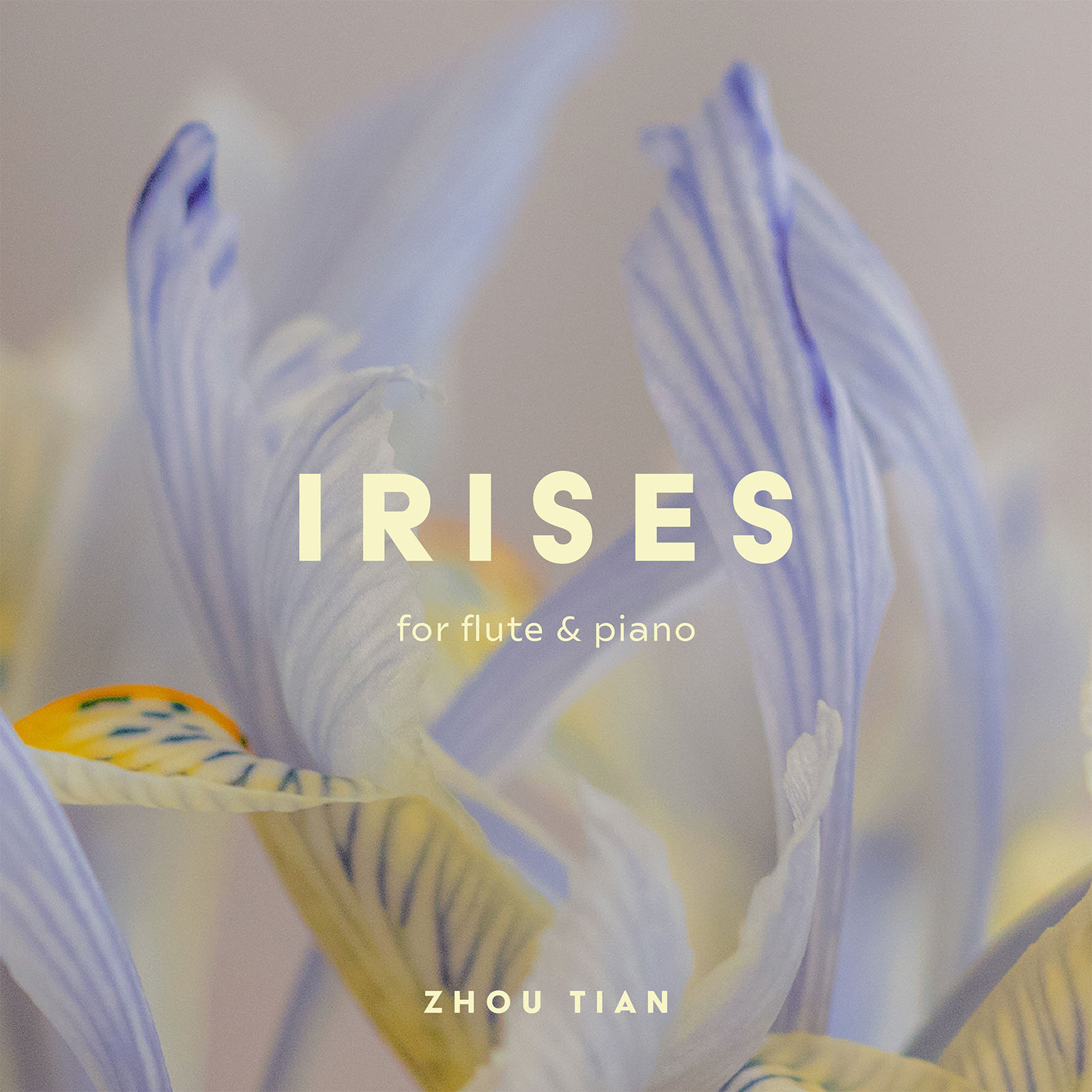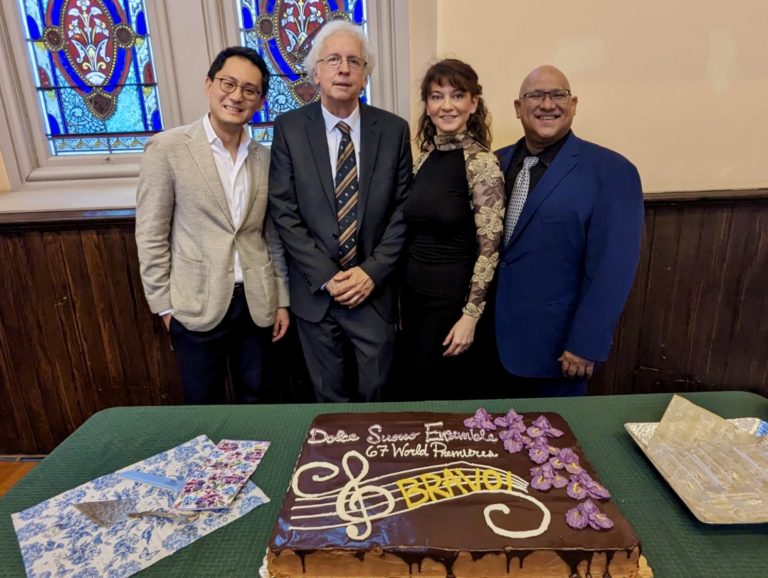
Irises
(2023) | 23 minutes
Commissioned by Dolce Suono Ensemble. Adapted from flute concerto by the composer
SCORING flute & piano
PREMIERE 1 October 2023, at Trinity Center for Urban Life, Philadelphia, PA., by Mimi Stillman, flute, and Charles Abramovic, piano
Listen / Watch
I. Irises (0:00) · II. Capriccio (9:43) · III. Arioso (13:24) · IV. Toccata (19:19)
Programme Note
Zhou Tian (b. 1981)
IRISES
for flute and piano (2023)
I. Irises
II. Capriccio
III. Arioso
IV. Toccata
Irises. Capriccio. Arioso. Toccata. These are the four movements that comprise “Irises,” a piece for flute and piano that I adapted from my flute concerto. From tranquil meditations to wild rituals, the piece is empowered by tradition while exploring the diversity of musical styles through reflection on the flute’s long and rich heritage (hence the baroque-inspired subtitles). There are hints of my musical lineage from Barber to Piston to traditional Chinese music, as I sought a coexistence of clarity of form with passionate expression, exploring the richness of orchestral timbre yet always embracing purity of line.
The piece begins with “Irises,” a movement of mixed moods of long singing lines and airy dances. The flower makes me think about the flute – sensuous and yet strong. “Capriccio” is a scherzo in perpetual motion. The rapid, repeated notes and the concise form drew its inspiration from Baroque dance pieces. “Arioso” is a meditation. As the flute joins the plush chords and dashing ornaments, the sonic color is altered frequently, masking the hinted atonality in the melody with romanticism. “Toccata,” the finale, is a virtuosic dance. An accumulation of materials sends the piece to a climax at the end.
©Zhou Tian
Reviews
On the concerto version
“A remarkable fusion of artistic mastery.”
—The Flute View
“A beautiful painting in four scenes…not a single note could be sacrificed. Casual and professional audiences alike will appreciate the beauty of the musical lines, while flutists are guaranteed to love exploring the color possibilities a performer can use to present this concerto…a joyful triumph”
—The Flutist Quarterly, National Flute Association
“Zhou’s gift for melody was apparent from the first movement, entitled ‘Irises,’ opening with an impressionistic-like canvas of lush orchestral sounds and floating themes for the flute, followed by a section of nonstop virtuosities…Above all, the concerto was a real showpiece for this flutist, who soared effortlessly through its wide-ranging melodies, runs and trills. The second movement, ‘Capriccio,’ was a scherzo, with syncopated, slightly jazzy rhythms. Stillman played with mesmerizing artistry in the slow movement, ‘Arioso,’ offering a breathtaking display of arpeggios and communicating with beautiful tone. The movement built to a sumptuous climax. The finale, a ‘Toccata,’ was vibrant and driving.”
—Cincinnati Business Courier
Other Media

Music for flute
- Flute Concerto
- Viaje (flute & string orchestra)
- Viaje (flute & string quartet)
- Viaje (flute, cello, piano)
- Irises (flute & piano)
- Duet (flute & piano)
- Hidden Grace (flute, viola & harp)
- Reading an Anthology of Chinese Poems… (flute, viola, harp & narrator)